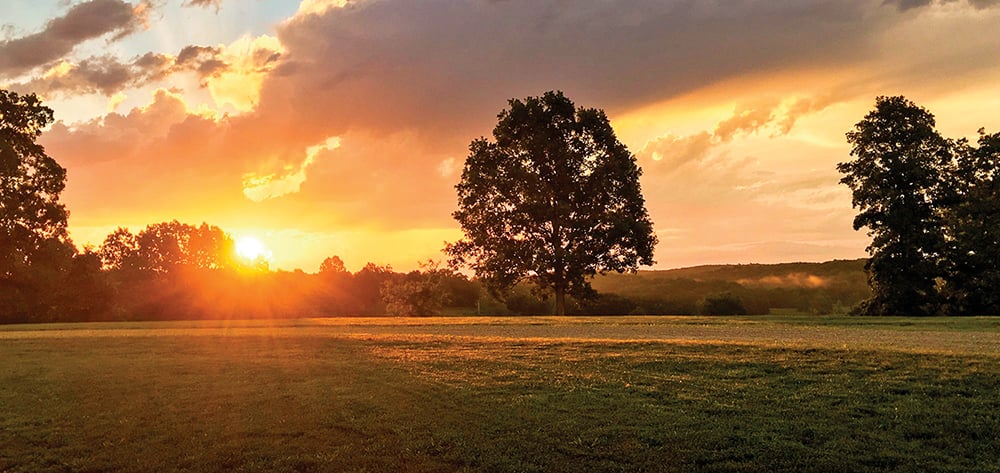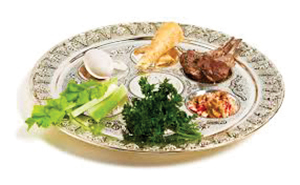In the late 1940s, Rav Yosef Shlomo Kahaneman—the Ponevezher Rav—was raising money to purchase plots of land to build a yeshiva in Bnei Brak, which was then a bunch of hills and sand. People thought he was crazy, since this was shortly after the War of Independence and people barely had money to buy food. “Why do you need all this land?” they asked. Pointing to a map, the Ponevezher Rav replied, “Here will be a yeshiva, here a girls’ high school and here a cheder!” People called him a “dreamer.” He replied, “True, I might be dreaming, but I’m dreaming with my eyes open!”
This Shabbos is called Shabbos Chazon, since the haftarah opens with the words “Chazon Yeshayahu”—the vision of Yeshayahu. When a Shabbos is titled with a name, it describes the power and potential of that particular Shabbos. Rashi says chazon means a prophecy in the nature of a vision. The power of this Shabbos is to help everyone be a true visionary.
A visionary is someone who sees a vision as a future reality. They articulate their vision over and over to all those they meet. Others may not see it yet, but articulating the vision helps make it into a reality. The Ponevezher Rav was a visionary; he saw a thriving Jewish neighborhood and a center for Torah learning, where others just saw hills and mounds of sand.
The haftarah of Chazon Yeshayahu describes the rebellious actions of klal Yisrael and how Hashem detested their observance of holidays and their sacrifices. That seems pretty clear, but what’s special is that Yeshayahu was able to see not only the upcoming destruction, but also to see the ultimate redemption.
Rav Shalom Noach Berezovsky, the Slonimer Rebbe, noted that Yeshayahu refers to Bnei Yisrael as banim, children: “Banim gidalti—I raised children” and “Banim mashchisim—decadent children.” The main focus of parents is to help their children develop all their talents for future success. When a child misbehaves or struggles, the parent does not just look at the now. Even if the child needs to be punished, the goal is to redirect the child to success.
Yeshayahu has a special vision: The now in the vision is a Jewish nation disconnected from Hashem; the people have cut off their ties to Hashem. Yet Hashem relates to them as His children, seeing beyond their temporary wayward behavior, and seeing the day when they will return to Him and shine.
Shabbos Chazon, with the haftarah’s reference to a future Beis Hamikdash, facilitates our seeing beyond our current state of loss, to see as a reality the future redemption and rebuilding of the Beis Hamikdash. This goal can be achieved through the exalted status we merit on this Shabbos. Every day, in Shemoneh Esrei, we pray for this vision as we say “V’sechezenah eineinu b’shuvecha l’Zion—may our eyes merit to see Your return to Yerushalayim.”
The Gemara records a dispute between Rebbi Yehudah and Rebbi Meir over whether klal Yisrael are considered children to Hashem only when they are following in the ways of Torah, or even when they are serving idols. Rebbi Meir rules that klal Yisrael’s relationship to Hashem as children is absolute. His position is alluded to in his name: The word “meir” means to illuminate, which provides the ability to see and comprehend. Although we generally rule like Rebbi Yehudah when he disagrees with Rebbi Meir, in this dispute we rule like Rebbi Meir.
This ability for all of us to reconnect with Hashem is experienced on Shabbos in general and specifically on Shabbos Chazon. Shabbos is an oasis. None of the rules of the Nine Days apply on Shabbos. This is to illustrate that the love of Hashem for klal Yisrael, expressed through Shabbos, remains unbridled.
This year the ninth of Av—Tisha B’Av—occurs on Shabbos Chazon. However, instead of sitting on the floor, fasting, and saying kinos, we will be wearing Shabbos clothes and eating lavish seudos, including meat! And the seuda hamafsekes—the last meal in the afternoon before the observance of Tisha B’Av—will also be much different than usual. While normally this meal includes a slice of bread dipped in ashes and a hard boiled egg, to signify mourning, instead we will eat a full seuda shelishis. Indeed, the Shulchan Aruch indicates that one may eat a lavish meal filled with meat and wine and all delicacies, similar to the feast that Shlomo HaMelech served in his prime.
This year, absent the rebuilding of the Beis Hamikdash, we can enter the fast of Tisha B’Av determined to turn vision into reality. We can improve and rededicate ourselves to Hashem, and make the building of the third Beis Hamikdash, speedily in our days, a reality.
Rabbi Baruch Bodenheim is the associate rosh yeshiva of Passaic Torah Institute (PTI)/Yeshiva Ner Boruch, where he leads a multi-level Gemara-learning program. PTI has attracted adult Jews of all ages from all over northern New Jersey for its learning programs. Fees are not charged but any contributions are always welcome. Beyond PTI, Rabbi Bodenheim conducts a weekly beis midrash program with chavrusa learning in Livingston plus a monthly group in West Caldwell. Rabbi Bodenheim can be reached at [email protected]. For more info about PTI and its Torah classes, visit www.pti.shulcloud.com.











